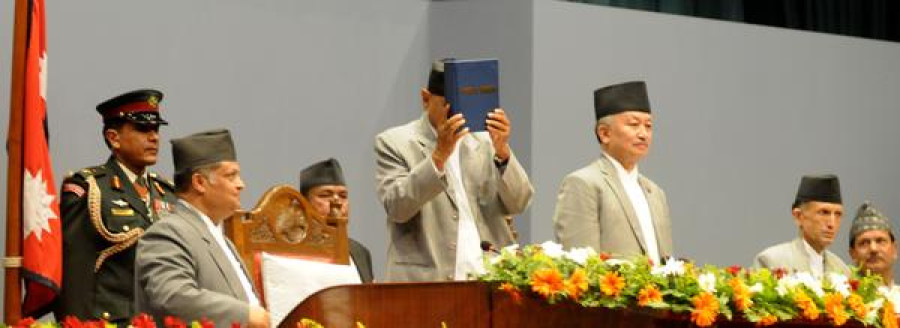Miscellaneous
Here are things you need to know about the 7 constitutions of Nepal
Nepal’s struggle for a constitution spans over seven decades.
On September 20, Nepal became the youngest republic in the world. Nepal’s struggle for a constitution spans over seven decades.Here is a snapshot of the history of Nepal’s seven constitution.
1) Government of Nepal Act, 1948
The first constitution of Nepal titled ‘Government of Nepal Act, 1948 was effective from 1 April 1948. The constitution had 68 articles. The power was solely owned by the Prime Ministers to select a bicameral legislature members or to alter the decisions made by them.
2) Interim Government of Nepal Act, 1951
After the Government of Nepal Act, an interim constitution was established which restored the power to the king. This constitution was called the Interim Government of Nepal Act. The then king, Tribhuvan Bir Bikram Shah promulgated the constitution.
3) The Constitution of the Kingdom of Nepal, 1959
In 1959, parliamentary elections were conducted by king Mahendra Bir Bikram Shah. He established another constitution just before the elections.
4) The Constitution of Nepal, 1962
King Mahendra established the Panchayat Constitution which had the provision of forming local assemblies. However, the king had the sole power in this system. Democracy was limited and no one could form political parties.
5) The Constitution of the Kingdom of Nepal 1990
A revolt in 1990 pressurized Birendra Bir Bikram Shah to take up a new constitution and switch to constitutional monarchy. Now, the king didn't have the sole power like before. A multiparty system with parliamentary system of government was formed.
6) The Interim Constitution of Nepal, 2007
The interim constitution which was adopted on January 15, 2007, announced the abolition of monarchy. It was implemented only on May 27 2008, after the first meeting of the constituent assembly.
7) The Constitution of Nepal 2072
The Constitution of Nepal 2072 was endorsed on September 16, 2015 by the Constituent Assembly meeting by more than two-thirds majority. It states Nepal as a federal democratic republican nation. The executive rights of the country are stated to be belonged to the Council of Ministers while the President would be ceremonial head-of-the-state.




 13°C Kathmandu
13°C Kathmandu









